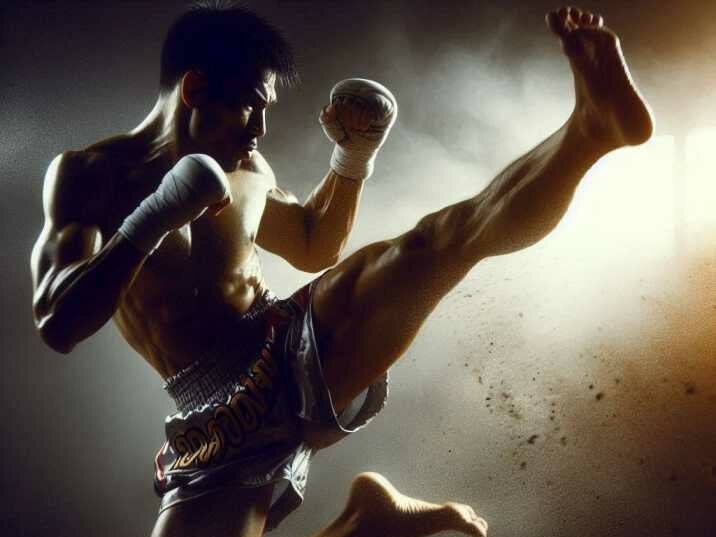Introduction
Table of Contents
Welcome to the dynamic realm of boxing martial arts, where discipline, agility, and strategy intertwine to create an exhilarating experience. In this comprehensive guide, we will delve deep into the diverse array of boxing styles, their origins, techniques, and benefits. From the fierce punches of Western Boxing to the intricate footwork of Taekwondo, there’s a style suited for every enthusiast, regardless of age or skill level.

Table of Contents
- Understanding Boxing Martial Arts
- Types of Boxing Martial Arts
- Western Boxing
- Kickboxing
- Muay Thai
- Savate
- Karate
- Taekwondo
- History and Evolution
- Benefits of Practicing Boxing Martial Arts
- FAQs
- Conclusion
Understanding Boxing Martial Arts
Boxing martial arts encompass a range of combat sports that involve striking with the fists, feet, elbows, and knees. These sports not only promote physical fitness but also cultivate mental resilience and self-discipline. With roots in ancient traditions and cultures, boxing martial arts have evolved into distinct styles practiced worldwide.
Types of Boxing Martial Arts
1. Western Boxing
Western Boxing, also known as the “Sweet Science,” focuses on the art of punching. It emphasizes speed, precision, and defensive techniques. Fighters employ jabs, crosses, hooks, and uppercuts to outmaneuver opponents within a squared ring. With its emphasis on head movement and footwork, Western Boxing is a cornerstone of combat sports worldwide.
2. Kickboxing
Kickboxing blends elements of boxing with martial arts techniques, incorporating both punches and kicks. Originating in Japan and later popularized in America, kickboxing emphasizes versatility and agility. Fighters utilize a variety of strikes, including roundhouse kicks, front kicks, and spinning back fists, to dominate opponents in the ring.

3. Muay Thai
Hailing from Thailand, Muay Thai is renowned for its devastating strikes and clinching techniques. Often referred to as the “Art of Eight Limbs,” Muay Thai practitioners employ fists, elbows, knees, and shins to overwhelm adversaries. With its emphasis on power and aggression, Muay Thai has become a global phenomenon, attracting practitioners from all corners of the world.
4. Savate
Savate, the French art of foot fighting, combines elements of boxing with elegant kicking techniques. Originating in the streets of Paris, Savate emphasizes grace and precision in its strikes. Fighters utilize both hands and feet, executing high kicks and spinning attacks with finesse and flair.
5. Karate
Karate, a traditional Japanese martial art, focuses on striking techniques and defensive maneuvers. Practitioners employ punches, kicks, and open-hand strikes in structured forms known as kata. With its emphasis on discipline and respect, Karate serves as a foundation for self-improvement and personal growth.
6. Taekwondo
Taekwondo, originating in Korea, is characterized by its high-flying kicks and dynamic movements. With an emphasis on speed and agility, Taekwondo practitioners execute rapid-fire kicks and spinning techniques to outmaneuver opponents. Through rigorous training and competition, Taekwondo fosters discipline, focus, and perseverance.
History and Evolution
The history of boxing martial arts is a tapestry woven with the threads of tradition, innovation, and cultural exchange. From the ancient Olympics to modern-day arenas, boxing martial arts have evolved in response to societal changes and technological advancements. Each style carries with it a rich heritage and lineage, reflecting the values and aspirations of its practitioners.
Benefits of Practicing Boxing Martial Arts
Engaging in boxing martial arts offers a myriad of benefits for the mind, body, and spirit:
- Physical Fitness: Enhances strength, flexibility, and cardiovascular health.
- Self-Defense Skills: Equips individuals with practical techniques for personal protection.
- Mental Discipline: Fosters focus, resilience, and self-confidence.
- Camaraderie: Builds friendships and camaraderie through shared training experiences.
- Cultural Appreciation: Provides insight into diverse traditions and customs from around the world.
Conclusion
In conclusion, boxing martial arts offer a dynamic and multifaceted journey for enthusiasts of all ages. Whether you’re drawn to the power of Muay Thai or the grace of Taekwondo, there’s a style waiting to be explored. By embracing the principles of discipline, respect, and perseverance, practitioners can unlock their full potential and embark on a lifelong quest for self-improvement and personal growth.
FAQs
- What age is suitable to begin practicing boxing martial arts?
- Children as young as 4 or 5 can start learning the fundamentals of boxing martial arts under proper supervision.
- Are boxing martial arts suitable for girls?
- Absolutely! Boxing martial arts offer benefits for individuals of all genders, promoting empowerment and self-confidence.
- Do I need special equipment to start training?
- Basic equipment includes gloves, hand wraps, and appropriate footwear. Some styles may require additional protective gear.
- How often should I train to see progress?
- Consistent practice, ranging from 2 to 4 times per week, is recommended to develop skills and fitness levels.
- Are boxing martial arts safe for beginners?
- With proper instruction and adherence to safety guidelines, boxing martial arts can be a safe and rewarding pursuit for beginners.


